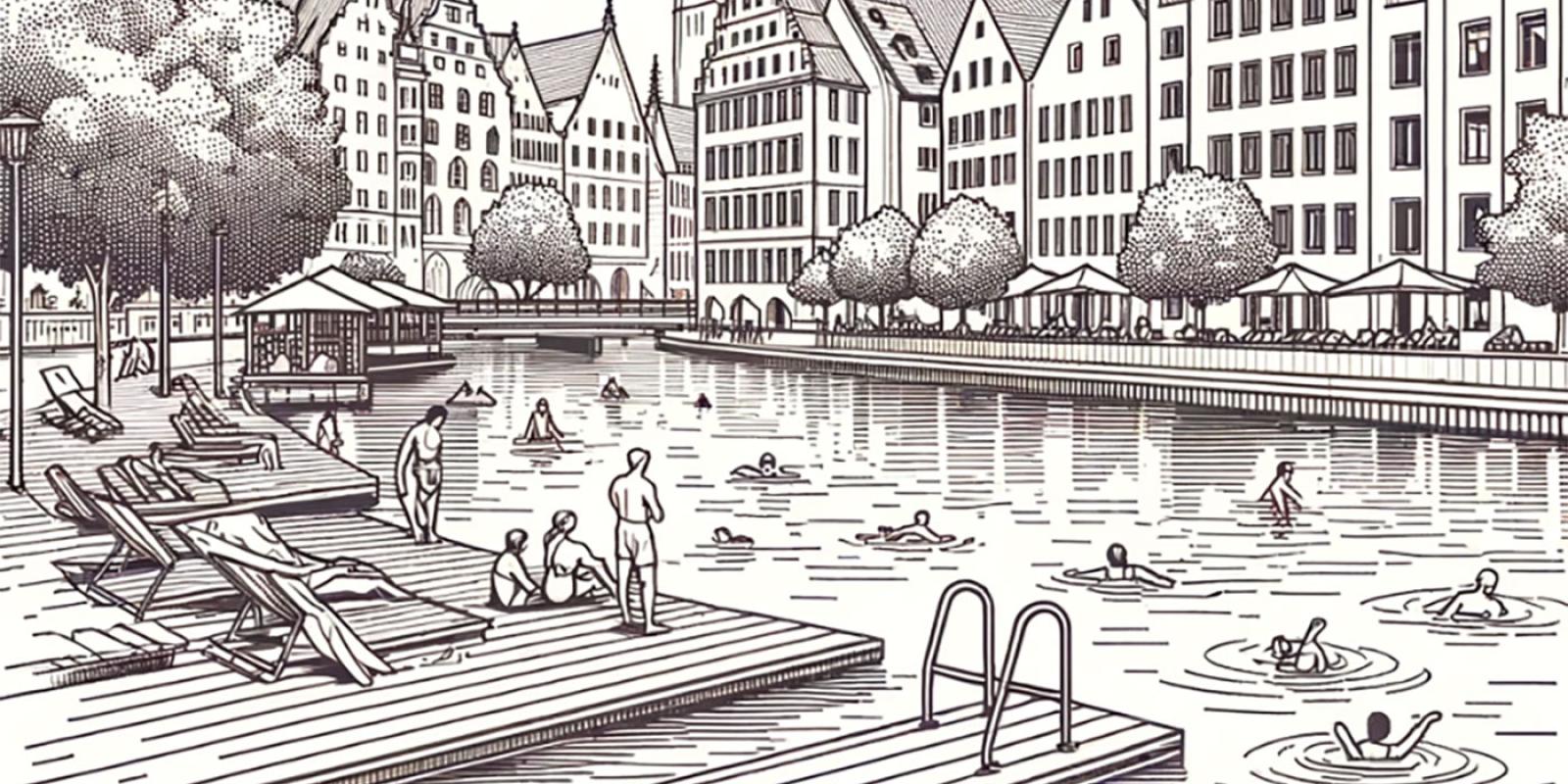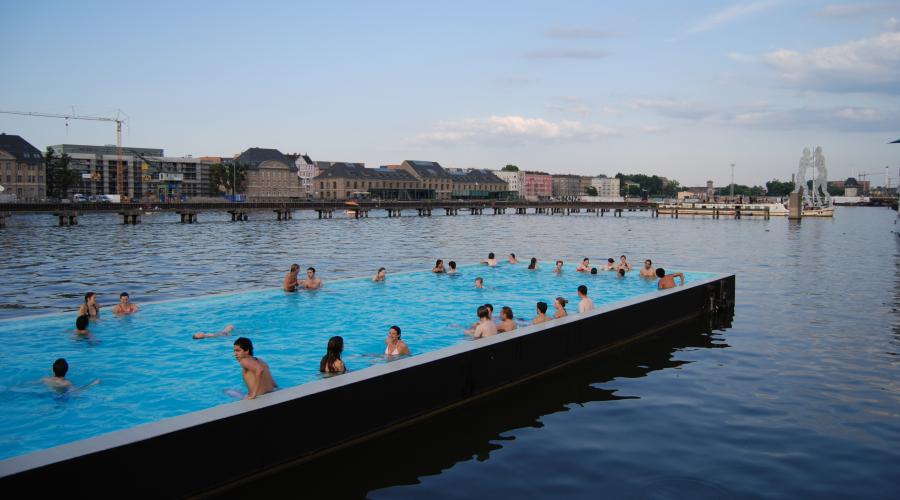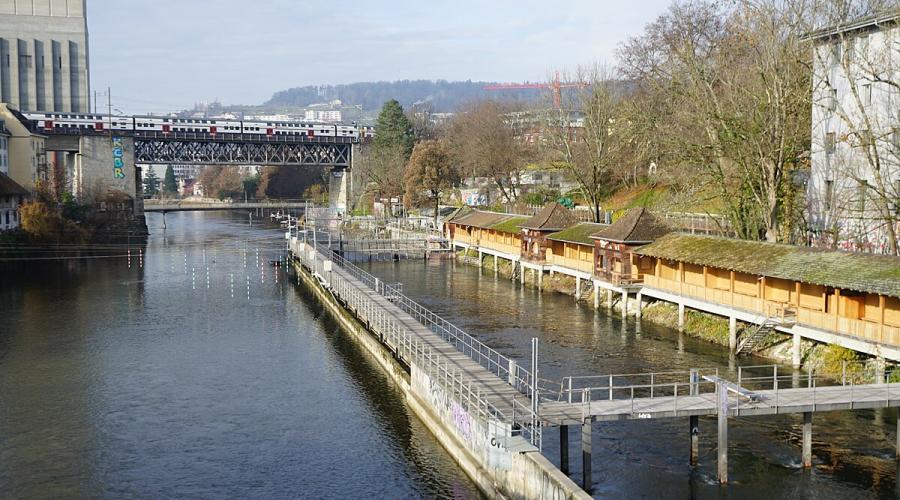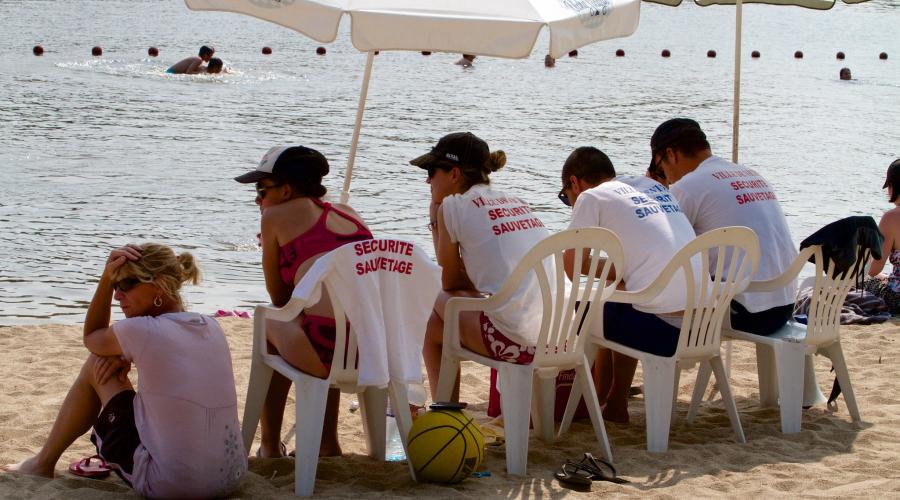
Our Studio "Baignades Urbaines" at the Laboratory LabEx IMU (Intelligences des Mondes Urbains) at the University of Lyon aims to investigate the future trends and challenges of urban river bathing/swimming in metropolitan areas such as Lyon, targeting the years 2030 and 2050. This will be achieved by taking an interdisciplinary and transdisciplinary approach that integrates socio-cultural contexts, urban growth, socio-spatial disparities, climate change, and the dynamic relationship between humans and nature.
Rationale
Bathing and/or swimming in rivers has a long-standing history in various cultures worldwide. Today, with the advent of river restoration projects in cities aimed at revitalizing rivers and their riverfronts into multifunctional green and blue spaces, a new movement has emerged in European cities advocating for the right to bathe and/or swim in natural rivers. This trend not only seeks new ways to mitigate climate change impacts, particularly urban heat islands, but also responds to a growing demand for natural interaction benefiting the well-being of city residents, especially in the aftermath of the COVID-19 pandemic.
Bathing/swimming in urban rivers not only enhances the rivers' recreational use, thereby highlighting their 'social connectivity', but also encourages a shift towards sustainable river management, emphasizing the importance of inclusiveness and social-ecological fairness. In support of this, the EU's Bathing Water Directive (2006/7/EC) serves as a legal framework to improve the water quality in natural water bodies across Europe. As a result, some European cities have initiated a series of pilot projects to facilitate regulated river bathing. Examples include the Badeschiff in Berlin, a floating public swimming pool in the river Spree, harbour baths and beaches in Copenhagen, and plans for the Seine River in Paris to host Olympic swimming events in 2024, with public bathing sites opening in 2025.
Despite these advancements, swimming/bathing in rivers remains prohibited in most European cities, although the practice has seen an increase. There are multiple challenges to be addressed, including water quality and human health concerns, the ecological integrity of rivers, drowning risks, and management and governance issues. These obstacles underscore the need for holistic strategies that balance recreational use with environmental stewardship, equality, and public safety, ensuring the revitalization of bathing/swimming in urban rivers.
Strategy
The "Baignades Urbaines" Studio at the Laboratory LabEx IMU at the University of Lyon has launched a variety of initiatives to engage stakeholders and communities. These include seminars, thematic video cafes, and a series of riverside walks ("Balades sur berges"), where we engage in discussions with various stakeholders, particularly practitioners, alongside social gatherings.
Furthermore, we are broadening our research scope to include Europe, examining innovative urban river bathing/swimming cases in several European cities such as Berlin, Copenhagen, Vienna, and some Swiss cities. This expansion entails planned field investigations and firsthand data collection.
Our goal is to develop a comprehensive synthesis of European urban river bathing/swimming practices and conduct a comparative analysis across different economic and socio-cultural contexts. We aim to explore alternative management solutions for the trend of urban river bathing/swimming in Europe and offer site-specific recommendations. This endeavor will not only enrich our understanding of urban river bathing/swimming across Europe but also equip local policymakers with actionable insights to foster sustainable river management.
Methods
Internationally, the topic of urban river bathing/swimming within the contemporary European context is relatively new, and there have been few scientific studies conducted on it. The pioneering Studio "Baignades Urbaines" at the Laboratory LabEx IMU at the University of Lyon focuses on four main areas related to urban river bathing in Lyon: (1) safety, which addresses water quality, accident (i.e., drowning) prevention, and rescue operations; (2) facilities and amenities, focusing on the provision, technical solutions, and management of swimming infrastructure; (3) attractiveness for the city, examining how bathing areas can enhance urban appeal through integration with cultural perceptions and other recreational activities; and (4) conflicts of interest of river resources, considering the environmental and ecological impacts of bathing and its compatibility with other urban activities. Together, these 4 axes highlight the complex balance between ensuring safety, accessibility, urban appeal, and environmental sustainability in managing urban river bathing.
The studio's approach embodies the adoption of both interdisciplinary and transdisciplinary methods, integrating research, policy, and practical applications. Led by Labex IMU at the University of Lyon, this project unites a wide range of stakeholders, including academic institutions, public entities at various levels, the private sector, and non-profit organizations. Initially launched by the public service of SDMIS (Firefighters of the Lyon Metropolis and the Rhône) to investigate drowning incidents and rescue operations in Lyon's rivers, the initiative has broadened to include contributions from academic partners across multiple disciplines. Participants such as EVS (UMR 5600 Environment City Society - CNRS), LMFA (Laboratory of Fluid Mechanics and Acoustics - UMR 5509), LEHNA (Laboratory of Ecology of Natural and Anthropized Hydrosystems), GRAIE (Rhône-Alpes Research Group on Infrastructures and Water), etc., address a spectrum of fields including ecology, biology, mechanical engineering, hydrology, hydraulic engineering, geomorphology, water resources management, and social and climate sciences. Moreover, public institutions like VNF (Waterways of France), EDF (Electricity of France), the Auvergne-Rhône-Alpes regional government, the metropolis of Lyon, and inter-municipal organizations such as the Grand Parc Miribel Jonage and the Community of Communes of the Plaine de l'Ain, etc., are engaged, each bringing their unique perspectives. Various NGOs, including ALMNS (A l'eau MNS) focused on training for civil security tasks and others dedicated to environmental conservation, also play a role. This wide-ranging collaboration underscores the project's expansive and cooperative essence, illustrating a commitment to addressing complex challenges through collective and multidisciplinary efforts.


